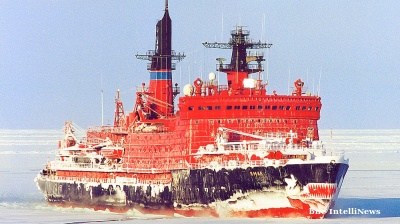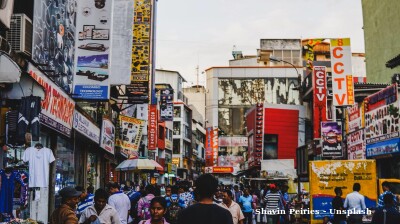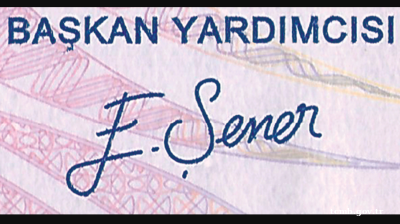To lose one prime minister may be regarded as a misfortune; to lose two looks like carelessness. That was most likely the thought running through the minds of the leaders of Romania’s ruling coalition when they allowed Prime Minister Mihai Tudose to get his way and force the resignation of several members of his cabinet including Deputy Prime Minister Sevil Shaideh, a key ally of Liviu Dragnea, the powerful leader of the ruling Social Democratic Party (PSD).
It’s just four months since the last clash between Dragnea and a prime minister appointed by the same ruling coalition, and a continuation of what Commerzbank analyst Alexandra Bechtel has dubbed a “political thriller par excellence”. In June, Sorin Grindeanu was forced out after his attempt to break away from being under the influence of Dragnea, who is unable to take up the post of prime minister himself since he has a criminal conviction but has acted as the de facto leader of the government since the December 2016 election.
This time around, things were somewhat different. Another prime minister appointed as a loyal lieutenant to Dragnea had become increasingly recalcitrant. But with the party’s ratings — and those of the PSD leader personally — already falling sharply in the polls, there was a generally shared view that having to appoint yet another prime minister (the fourth this year) would be too great a blow for the credibility of both the party and the government.
Tudose could also convincingly argue that Shaideh and another of the ministers he wanted to throw on the scrapheap, European Funds Minister Rovana Plumb, were a threat to credibility. Both have recently come under investigation by Romania’s highly active National Anticorruption Directorate (DNA) in a probe centred on Dragnea’s power base in Teleorman county. The third to bow out on October 12 was Transport Minister Razvan Cuc, condemned by the prime minister for his poor performance. Tudose had also wanted to get rid of Viorel Ilie, who like Shaideh and Plumb was tarnished by a corruption scandal despite a DNA probe being blocked by the parliament, but the minister for liaison with parliament has so far refused to go. He is a member of the PSD’s coalition partner, the Alliance for Liberals and Democrats, whose leader Calin Popescu Tariceanu is even more vocally opposed to the DNA’s activities than Dragnea is.
“In the power struggle with the strong PSD leader Dragnea, Prime Minister Tudose has definitely achieved a partial victory. But it remains to be seen whether Tudose has actually already won the contest now and managed to break away from Dragnea,” wrote Bechtel on October 13. “The power struggle between Dragnea and Tudose could therefore go another round.”
Indeed, some observers argue that the ground Tudose gained in the first round on October 13 was lost the very next day when PSD leaders gathered again to pick replacement ministers. They include Paul Stanescu, the leader of PSD Olt county branch, who has been nominated to replace Shaideh as minister of development and deputy prime minister. Stanescu is said to have helped Dragnea take over the PSD leadership after his predecessor, former prime minister Victor Ponta, stepped down in 2015. While there are rumours within the party that the relationship between the two has cooled, Stanescu still claims he “is proud” of the friendship with Dragnea.
Ponta, who was sidelined within the PSD after Dragnea came to power, slammed the appointments on his Facebook page, which he frequently uses to goad the party’s current leader.
“Tudose won the first part of the match and capitulated unconditionally in the second half. It is a shame. In the end, it was a loss for everybody, the government and Romania included,” Ponta wrote on Facebook. “After [former president Traian] Basescu’s ‘young people’, now it is the time for Dragnea’s ‘young people’. With Stanescu and Stroe it is clear it can be worse than with Shaideh and Cuc!” Ponta wrote.
Local baron to party leader
Dragnea came to prominence in national politics from his native Teleorman county, a mainly agricultural region to the north of the Danube that marks Romania’s border with Bulgaria, and one of the poorest regions in the EU. He was initially a member of the Democratic Party led by Basescu, ironic given their rivalry in later years. However, he soon switched to the PSD. An activist for the party as well as president of the local county council for almost a decade, he is one of the so-called “local barons” that used their regional power base as a springboard to national politics.
At national level, Dragnea rose through the ranks of the PSD, as well as entering government. He was appointed interior minister in 2009 under Romania’s then prime minister Emil Boc, but stepped down after just 12 days after clashing with two influential party leaders. His next cabinet appointment, as regional development minister, lasted until he was issued a suspended sentence for voter manipulation in 2015, a sentence that was confirmed and lengthened by the high court the following year.
Despite this, he was endorsed overwhelmingly as PSD leader later in 2015 after Ponta stepped down when he became the subject of a raft of corruption investigations.
Over the following few months the weight of corruption accusations against PSD leaders started to snowball, creating a rising tide of dissent from Romanians. Ponta’s government, which had been in office since 2012, was finally brought down by mass protests sparked by the Club Colectiv tragedy, a fire in a Bucharest nightclub that resulted in the deaths of dozens of young people. Revelations that the club’s owner had been operating without the required licences demonstrated a direct link between the deaths and corruption among officials.
The PSD spent the following year out of office, regrouping under Dragnea, while Romania was ruled by a technocratic government appointed by President Klaus Iohannis. Yet memories in politics are short. When the general election came around in December 2016, the PSD won convincingly, easily managing to form a majority in both houses of parliament with the support of Alde.
The PSD was helped by a kind of “anti-corruption fatigue” among many Romanians, together with the party’s strong local organisation and extremely generous tax breaks and public sector wage hikes promised in the days before the vote. Dragnea was seen as the main strategist in fighting off a challenge from the centre-right opposition made up of technocratic prime minister Dacian Ciolos, the National Liberal Party (PNL) and the newly formed Save Romania Union (USR).
“Both among the party’s activists and its regional ‘barons’ there is a perception that it is Dragnea’s political and organisational talents which led to its decisive victory in the December elections,” wrote OSW analyst Tomasz Dąborowski at the time.
Viewed as a “natural candidate for prime minister” at least from within the party, according to Dąborowski, Dragnea was denied the top job by Iohannis’ determination to uphold a law preventing those with criminal convictions from holding high office. Nonetheless, ever since the formation of a new PSD-led government in January he has been pulling the strings from behind the scenes — a position that earned him the monicker “the red cardinal” from one analyst covering Romania — and appearing alongside the current prime minister for all major announcements. To maintain this position, he has successfully taken out his rivals from within both the government and the party, at least until now.
Undermining the anti-corruption fight
Throughout the last year, Dragnea and his allies have been determinedly trying to chip away at anti-corruption legislation. This has not so far been successful — the first attempt via an emergency decree adopted in January sparked Romania’s largest protests since the fall of communism — but more initiatives keep being launched by the two PSD-led governments.
This has been another source of contention between Dragnea on the one hand and first Grindeanu and later Tudose on the other. For the PSD leader — who is currently on trial for abuse of office — the relaxation of anti-corruption laws is an urgent priority. Not only are the current rules denying him the prime minister position, if found guilty in the latest court case he could be sent to prison. Meanwhile, the two prime ministers have been aware of the damage these efforts are doing to their reputations both among Romanian voters and in the eyes of external observers such as the European Commission.
“There are still some important decisions to make, such as the relaxation of the criminal law on corruption. Dragnea is likely to still push for this, as any ambitions he has for the prime minister’s office will fail as he is barred from this post under current law,” stressed Commerzbank’s Bechtel.
Meanwhile, in addition to the ongoing trial, the DNA has launched various probes targeting close allies of Dragnea, including the probe into Shaideh and Plumb, which concerns the transfer of land in Teleorman county. The Rise investigative journalism project reported in July that prosecutors had asked for information from the Brazilian authorities about the activities of Dragnea and his associates in their country. Rise claimed that Dragnea has properties and runs businesses in Brazil; the politician has denied this while admitting to holidaying in the Latin American country.
Policy confusion continues
The inconclusive result of the mid October power struggle between Dragnea and Tudose means the uncertainty surrounding policymaking in Romania is set to continue.
Ever since the first PSD-Alde government came to power in January, there has been internal conflict about what was seen as the executive’s failure to realise the promises made by the PSD ahead of the election. This intensified after Tudose came to power in June, with many of the policies he announced to the parliament ahead of his appointment being contradicted or cancelled in the following weeks. This led to a fiscal rollercoaster for foreign investors and local businesses alike, as they were unable to make future plans with any certainty over policy.
When the probe into Shaideh and Plumb heralded the latest conflict, Otilia Dhand of Teneo Intelligence warned that policymaking was again being “derailed again by politics” which would most likely lead to “complicating cabinet decision making”. With two centres of power remaining within the ruling coalition, this is only set to continue.
Moreover, the terms of the fulfilment of the PSD’s promises, one of the ongoing sources of contention and a ticking time bomb, is about to erupt. The party has repeatedly made extremely generous pay rise promises for the public sector. However, while some of these have already been pushed through, the upcoming pay hikes promised for January 2018 will be largely cancelled out by a decision to shift the burden of social security contributions from employers to employees. The government was most likely motivated by the need to rein in the budget deficit, amid warnings it was breaking through the 3% threshold set for entry to the EU’s excessive deficit procedure at a time when the country’s GDP growth is the fastest in the bloc of 28 countries.
This argument has cut little ice with disgruntled public sector workers, however, and October 4 saw thousands of trade unionists arriving in Bucharest to take their grievances to the government. Anger among the party’s main support base is only set to continue as the end of the year approaches. To try and counteract this, the PSD is increasingly throwing red meat to the large conservative segment of Romanian society, for example with plans for a referendum that would effectively ban gay marriage.
Hopes that the October showdown between Dragnea and Tudose might have established one or the other as the clear leader of the government were not fulfilled, leaving Romanians and investors with more uncertainty — and most likely more unrest — to come.
Features

Ambition, access and acceleration – Uzbekistan’s Startup Garage opens free academy for entrepreneurship
Aim is to train 50,000 young founders by 2030.

Ukraine’s growing energy crisis promises a cold and dark winter
Since the summer, Kyiv has changed tactics. Given the almost complete failure of Western oil sanctions to curb Russian oil exports, it has been targeting Russian oil refineries. The Kremlin has struck back, targeting Ukraine's power system.

Russia, China sign off on Northern Route shipping deal to slash global freight times
Russia and China have signed a landmark agreement to develop and commercialise the Northern Sea Route (NSR), after Beijing tested the route last month, that could slash Europe-Asia cargo transit times and challenge the primacy of the Suez Canal.

Sri Lanka’s economic escape
Sri Lanka’s recovery over the past year reads like a narrow escape rendered into a cautious, albeit unfinished success story.




